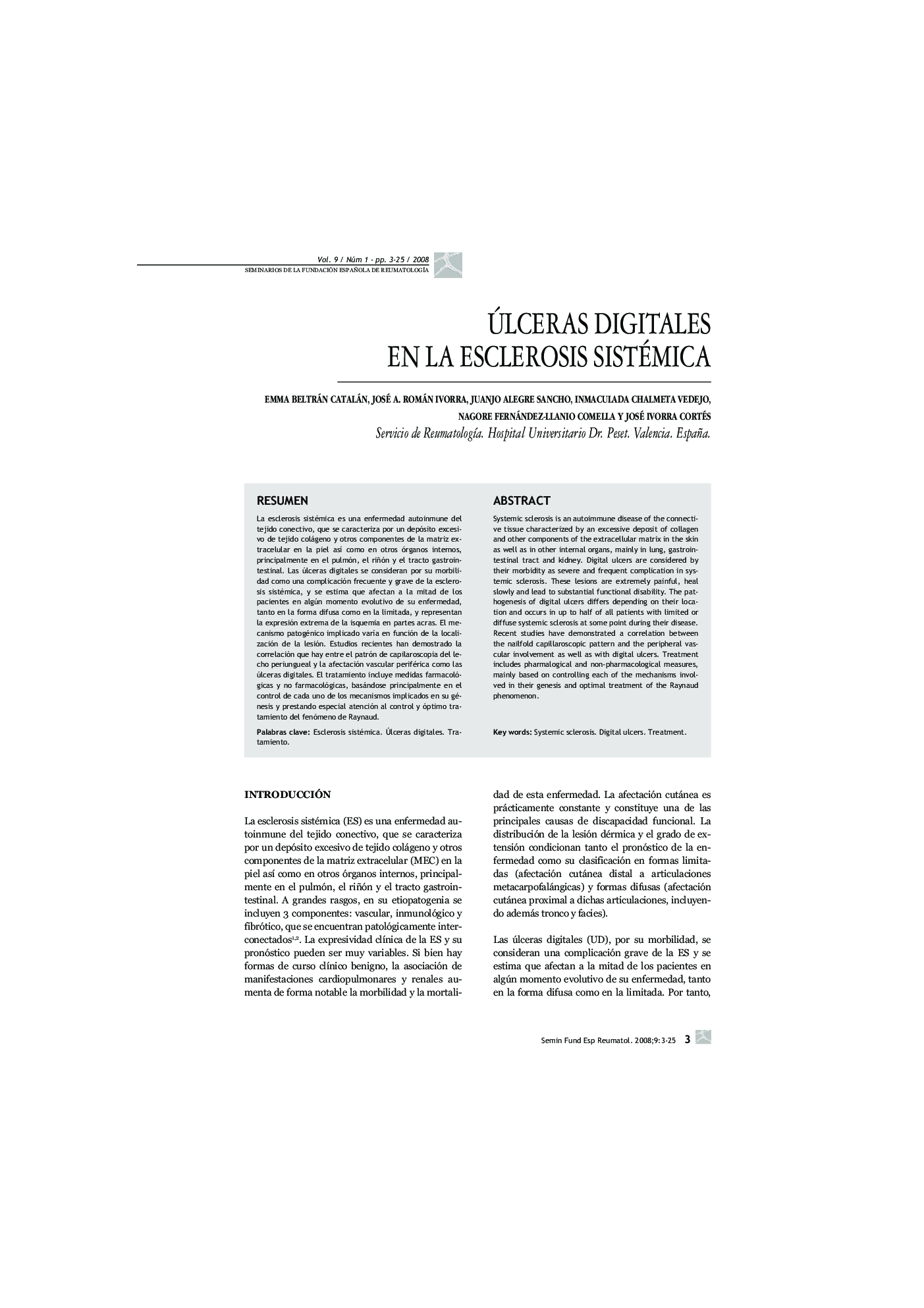| Article ID | Journal | Published Year | Pages | File Type |
|---|---|---|---|---|
| 3391190 | Seminarios de la Fundación Española de Reumatología | 2008 | 23 Pages |
Abstract
Systemic sclerosis is an autoimmune disease of the connective tissue characterized by an excessive deposit of collagen and other components of the extracellular matrix in the skin as well as in other internal organs, mainly in lung, gastrointestinal tract and kidney. Digital ulcers are considered by their morbidity as severe and frequent complication in systemic sclerosis. These lesions are extremely painful, heal slowly and lead to substantial functional disability. The pathogenesis of digital ulcers differs depending on their location and occurs in up to half of all patients with limited or diffuse systemic sclerosis at some point during their disease. Recent studies have demonstrated a correlation between the nailfold capillaroscopic pattern and the peripheral vascular involvement as well as with digital ulcers. Treatment includes pharmalogical and non-pharmacological measures, mainly based on controlling each of the mechanisms involved in their genesis and optimal treatment of the Raynaud phenomenon.
Related Topics
Health Sciences
Medicine and Dentistry
Immunology, Allergology and Rheumatology
Authors
Emma Beltrán Catalán, José A. Román Ivorra, Juanjo Alegre Sancho, Inmaculada Chalmeta Vedejo, Nagore Fernández-Llanio Comella, José Ivorra Cortés,
